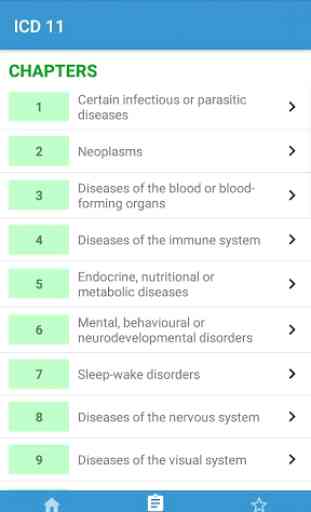ICD 11 Classification of Diseases
ICD is the foundation for the identification of health trends and statistics globally, and the international standard for reporting diseases and health conditions. It is the diagnostic classification standard for all clinical and research purposes.
The first international classification edition, known as the International List of Causes of Death, was adopted by the International Statistical Institute in 1893.
WHO was entrusted with the ICD at its creation in 1948 and published the 6th version, ICD-6, that incorporated morbidity for the first time. The WHO Nomenclature Regulations, adopted in 1967, stipulated that Member States use the most current ICD revision for mortality and morbidity statistics. The ICD has been revised and published in a series of editions to reflect advances in health and medical science over time.
ICD-10 was endorsed in May 1990 by the Forty-third World Health Assembly. It is cited in more than 20,000 scientific articles and used by more than 100 countries around the world.
A version of ICD-11 was released on 18 June 2018 to allow Member States to prepare for implementation, including translating ICD into their national languages. ICD-11 will be submitted to the 144th Executive Board Meeting in January 2019 and the Seventy-second World Health Assembly in May 2019 and, following endorsement, Member States will start reporting using ICD-11 on 1 January 2022.
Source: http://www.who.int
Attribution: Icon made by Freepik from www.flaticon.com
The first international classification edition, known as the International List of Causes of Death, was adopted by the International Statistical Institute in 1893.
WHO was entrusted with the ICD at its creation in 1948 and published the 6th version, ICD-6, that incorporated morbidity for the first time. The WHO Nomenclature Regulations, adopted in 1967, stipulated that Member States use the most current ICD revision for mortality and morbidity statistics. The ICD has been revised and published in a series of editions to reflect advances in health and medical science over time.
ICD-10 was endorsed in May 1990 by the Forty-third World Health Assembly. It is cited in more than 20,000 scientific articles and used by more than 100 countries around the world.
A version of ICD-11 was released on 18 June 2018 to allow Member States to prepare for implementation, including translating ICD into their national languages. ICD-11 will be submitted to the 144th Executive Board Meeting in January 2019 and the Seventy-second World Health Assembly in May 2019 and, following endorsement, Member States will start reporting using ICD-11 on 1 January 2022.
Source: http://www.who.int
Attribution: Icon made by Freepik from www.flaticon.com
Category : Medical

Related searches




